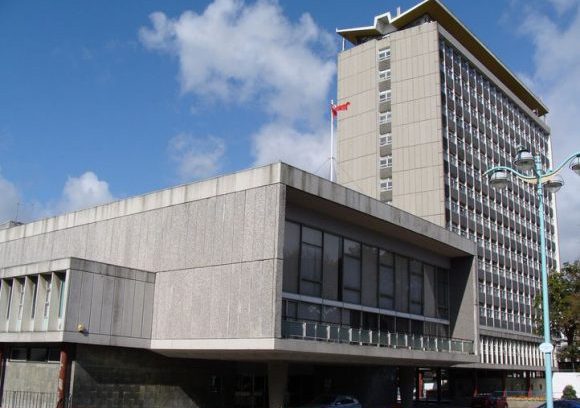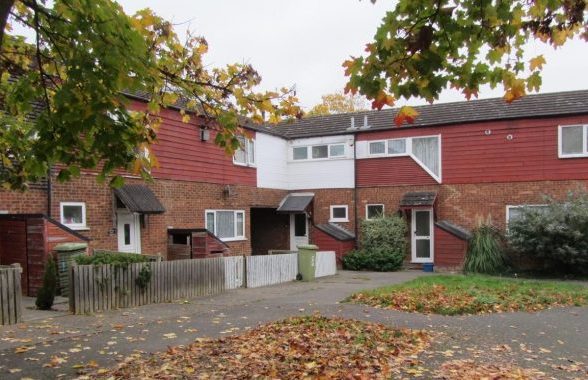This website uses cookies
This website uses cookies to enable it to function properly and to analyse how the website is used. Please click 'Close' to accept and continue using the website.




Twentieth century architecture in the UK is often under valued and vulnerable to redevelopment. The Twentieth Century Society believes that increased Conservation Area designation could help to combat this threat.
Catherine Croft, Director of the Twentieth Century Society, commented: “Sadly much valuable and interesting post-war development is being demolished or heavily altered, or is coming under threat of major change, with little or no regard to the heritage significance of such developments because they are not viewed as ‘historic’. Indeed, twentieth century structures and especially the tall buildings which became popular in the 1960s are regularly identified as ‘negative features’ in heritage assessments.” The Society received a grant from Historic England to research C20th conservation areas.
The Twentieth Century Society has historically concentrated its casework on listed buildings and campaigning for more listings, but has become increasingly aware of the potential benefits of designating C20th built heritage as conservation areas. Groups of C20th buildings can be designated on their own or valued for their positive contribution to the architectural or historic interest of conservation areas of older buildings. A conservation area is a particularly appropriate way of maintaining the special character of larger-scale developments, such as housing or universities, which might include landscaping, street layout and street furniture that typify much C20th development.
More than 50 areas across the country have been identified as having potential for future conservation area status. These include post war public and private housing schemes, university campuses, an aerodrome in Salford, a former children’s holiday camp in Lancashire and Coventry city centre.
Two areas, Plymouth inner City Centre and the northern section of the Eaglestone Housing Estate in Milton Keynes, have been selected as exemplary projects, researched in detail and put forward to their local stakeholders and councils with recommendations that they be considered for designation. Detailed draft conservation area appraisals for these areas have been prepared to aid discussion.
Like Coventry, Plymouth is an extraordinary example of a British city which has had the whole of its centre completely re-planned after heavy bombing during World War II. It was designed by renowned 20th Century town planner, Professor Patrick Abercrombie, and James Paton Watson, Plymouth city Engineer. It was heavily influenced by the Beaux-Arts architectural style with an emphasis on classicism and symmetry including flat roofs, and artwork including sculpture and murals and a grid layout of streets and buildings. The city has more listed 1950s buildings than anywhere outside London.
The northern part of the Eaglestone grid square in Milton Keynes is an early 1970s housing development, designed and built under the direction of the distinguished Anglo-Swedish architect Ralph Erskine, whose best-known UK work is the Grade II listed Byker housing estate in Newcastle. Erskine was concerned that the form of his residential buildings should enhance the life of the occupants and this is evident at Eaglestone. The pedestrian environment, segregated from traffic, is intended to encourage social exchange while houses are divided in ‘gossip groups’ or clusters around pedestrian paths and open spaces.
By far the largest category in the list of proposed conservation areas is public housing. Many of the developments were designed by, or at least influenced by, leading architects of national standing and incorporated new ideas on architectural form and technology, with a strong emphasis on landscaping. However, there seems to be a widespread feeling among many residents, local councillors and council officers that almost by definition, public housing is deemed unsuitable for designation and is not regarded as ‘heritage.’
Croft commented: “It seems clear that when the merits of twentieth century buildings and developments are being assessed for possible conservation area designation there needs to be both thorough historical research and a more open approach to the particular qualities of twentieth century design, which are often very different from those of earlier periods. Crude repairs or clumsy addition of service ducts may dominate aesthetically, but are often superficial and easily reversed.”
Some areas proposed include listed buildings; a Conservation Area designation would afford greater protection to the setting of these listed buildings and allow the relationship between the buildings and the spaces and planting around them to be preserved and enhanced.
The research report was commissioned last year, the 50th anniversary of the 1967 Civic Amenities Act which established the principle of Conservation Area designation. There are now around 10,000 conservation areas in England. The research was carried out by Neil Burton and Andrew Derrick of the Architectural History Practice and Esther Robinson Wild of Robinson Wild Consultancy.
The project aims to produce information and guidance for heritage professionals, planners, local authorities and the public. There will be a seminar to share the results with those designating or working with conservation areas on 22 March: places can be booked here.
Examples of existing C20 conservation areas include the Moderne houses in Abbotshall Avenue in Enfield, North London, the 1960s redevelopment of Walbottle Village west of Newcastle, the Bata development at East Thurrock in Essex and the inter-war housing around School Road, Hall Green, Birmingham.
For press enquiries:
Catherine Croft, Director Twentieth Century Society
catherine@c20society.org.uk 020 7250 3857

Become a C20 member today and help save our modern design heritage.